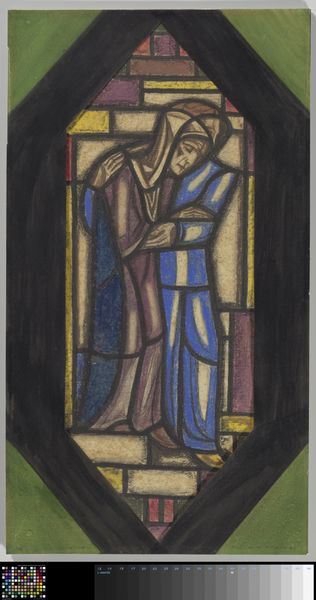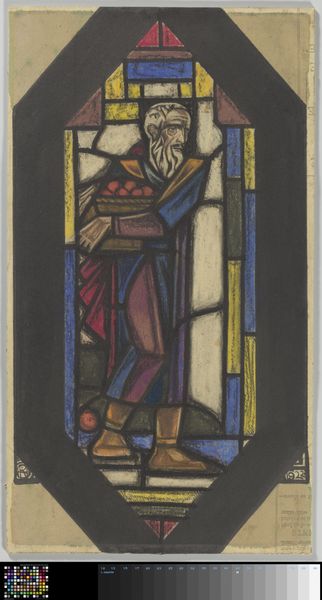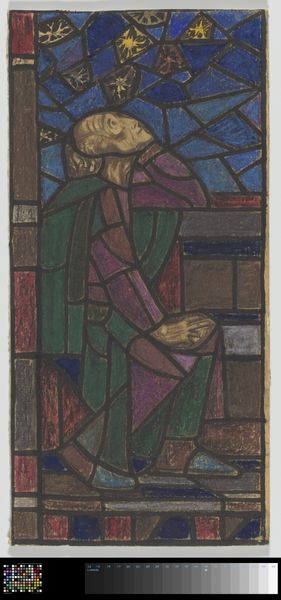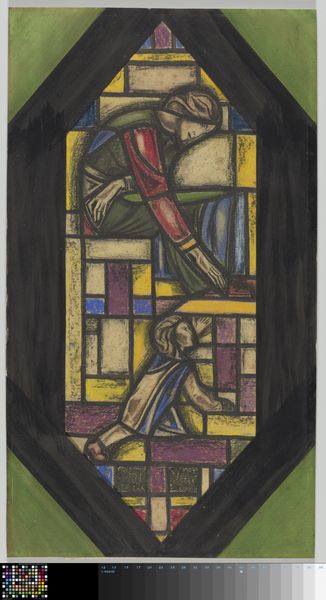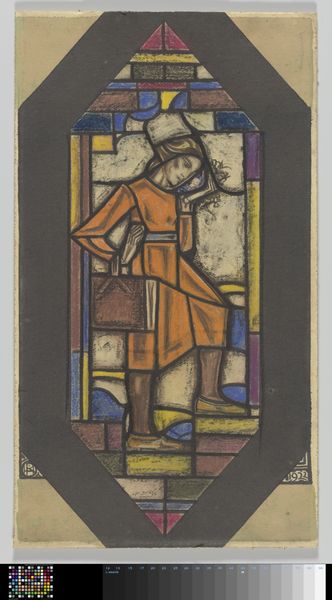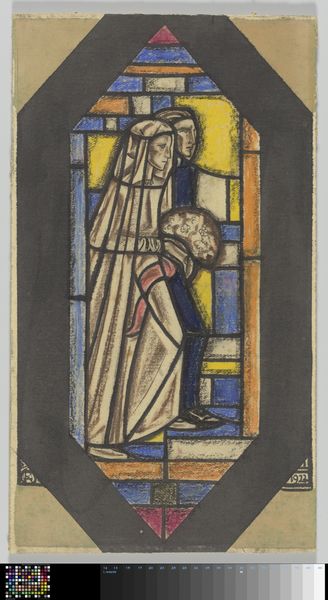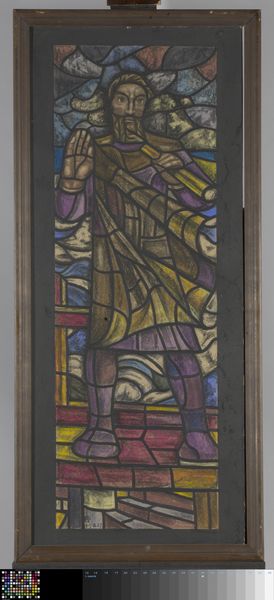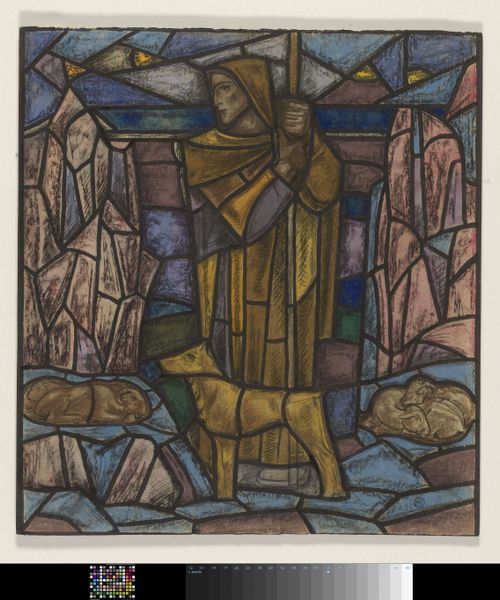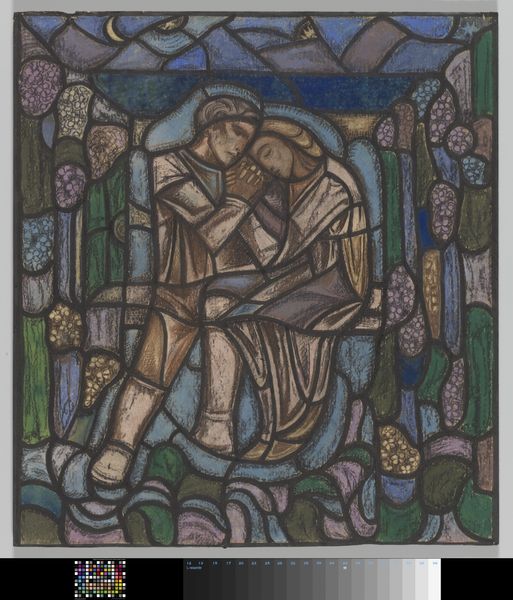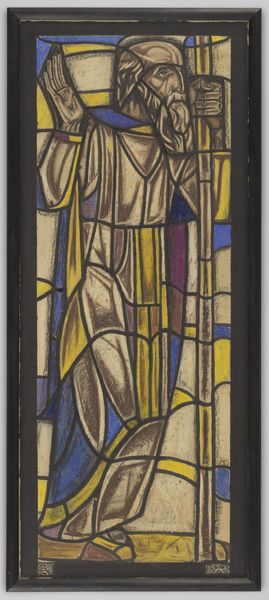
Dimensions: height 685 mm, width 404 mm, height 635 mm, width 357 mm
Copyright: Rijks Museum: Open Domain
Curator: This is "The Stairway of Life" by Richard Nicolaüs Roland Holst, created around 1922. The piece employs mixed media—ink, pastel, and watercolor—on paper. It's currently housed in the Rijksmuseum. Editor: It has an undeniably melancholic air about it. The stylized figures clasped together, rendered in muted greens and purples against that dark background... It's almost funereal. Curator: Indeed. Roland Holst was deeply involved in the Symbolist movement. Observe how the composition leads your eye upwards, from the inscription at the base towards the embrace at the apex, suggesting perhaps the ascending nature of the life cycle. The architectural form, evocative of stained glass, lends itself well to narrative expression. Editor: It does raise questions about his role in socialist movements. Stained glass design in that era often served civic functions – did Roland Holst see this design as speaking to shared human experience, universal in its stages? And does that formal structure suggest an institutional frame of life itself? Curator: The muted palette deserves careful observation. The restraint in color certainly contributes to the solemnity, and yet each shade is precisely chosen, functioning symbolically, if we delve into colour theory. Perhaps this is intended to represent various stages of human emotion throughout life’s journey, but without excessive sentimentality. Editor: Right, but what is he actually trying to convey about “the stairway?” Is it progress, as the ascending design suggests, or perhaps cyclical, evoking endless emotional returns, embracing through lifetimes? His artistic involvement with unions clearly informs his perception of collective destiny and is definitely worthy of debate when understanding “The Stairway of Life”. Curator: Ultimately, it becomes a subjective reading—the success resting perhaps with that initial emotional resonance, followed by decoding these internal elements, and not some predefined historic association alone. Editor: Agreed. Its power resides not only in the artist's intention but also in its potential to spark thoughtful engagement with viewers to evoke contemplation concerning how these emotional realities manifest in cultural products and life trajectories, ultimately.
Comments
No comments
Be the first to comment and join the conversation on the ultimate creative platform.
